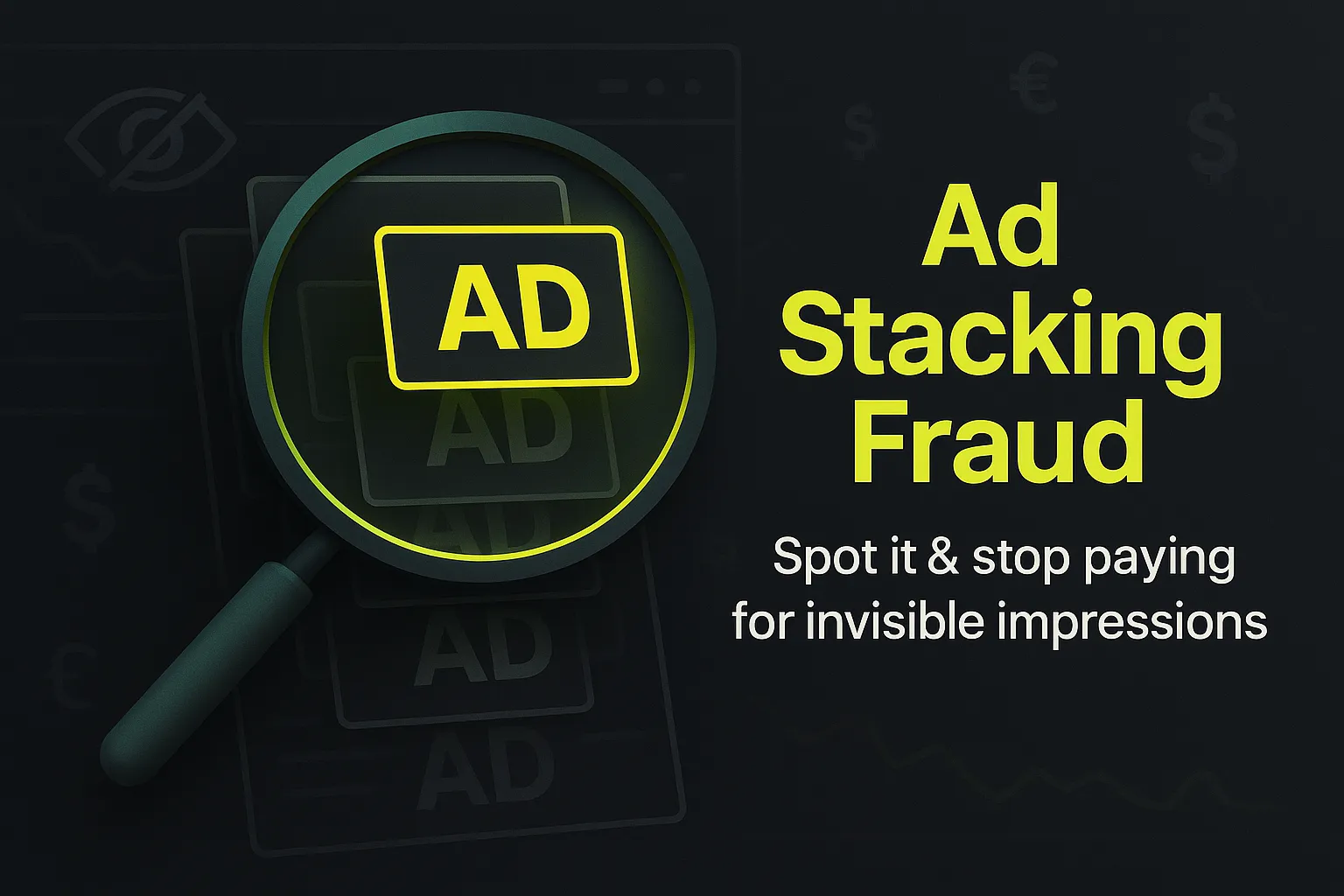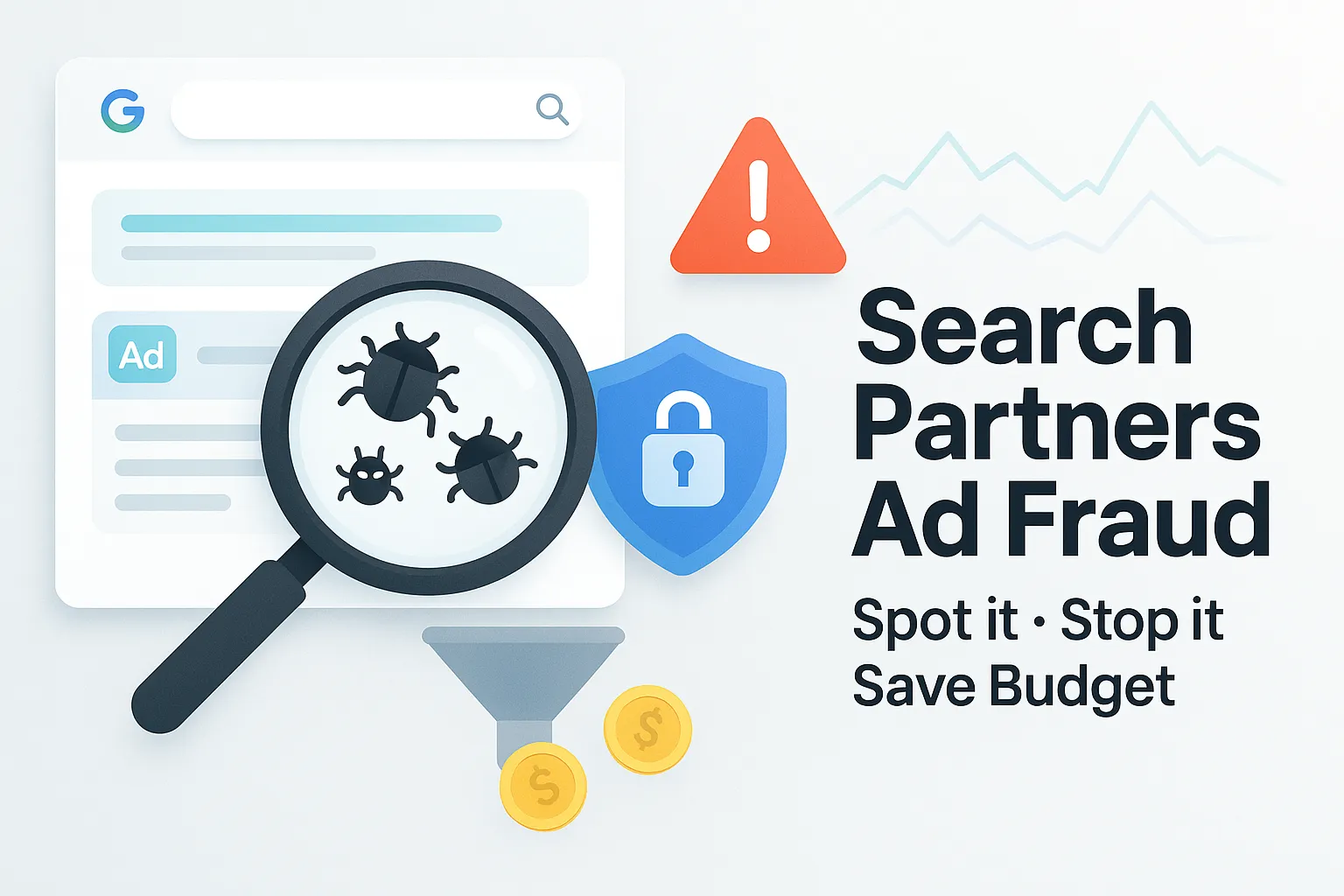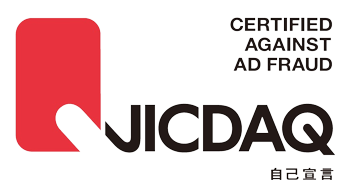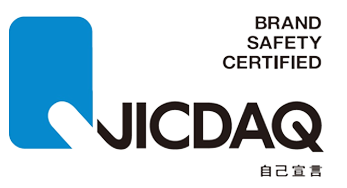Domain Spoofing: Definition, Prevention & Best Tools (2025 Guide)
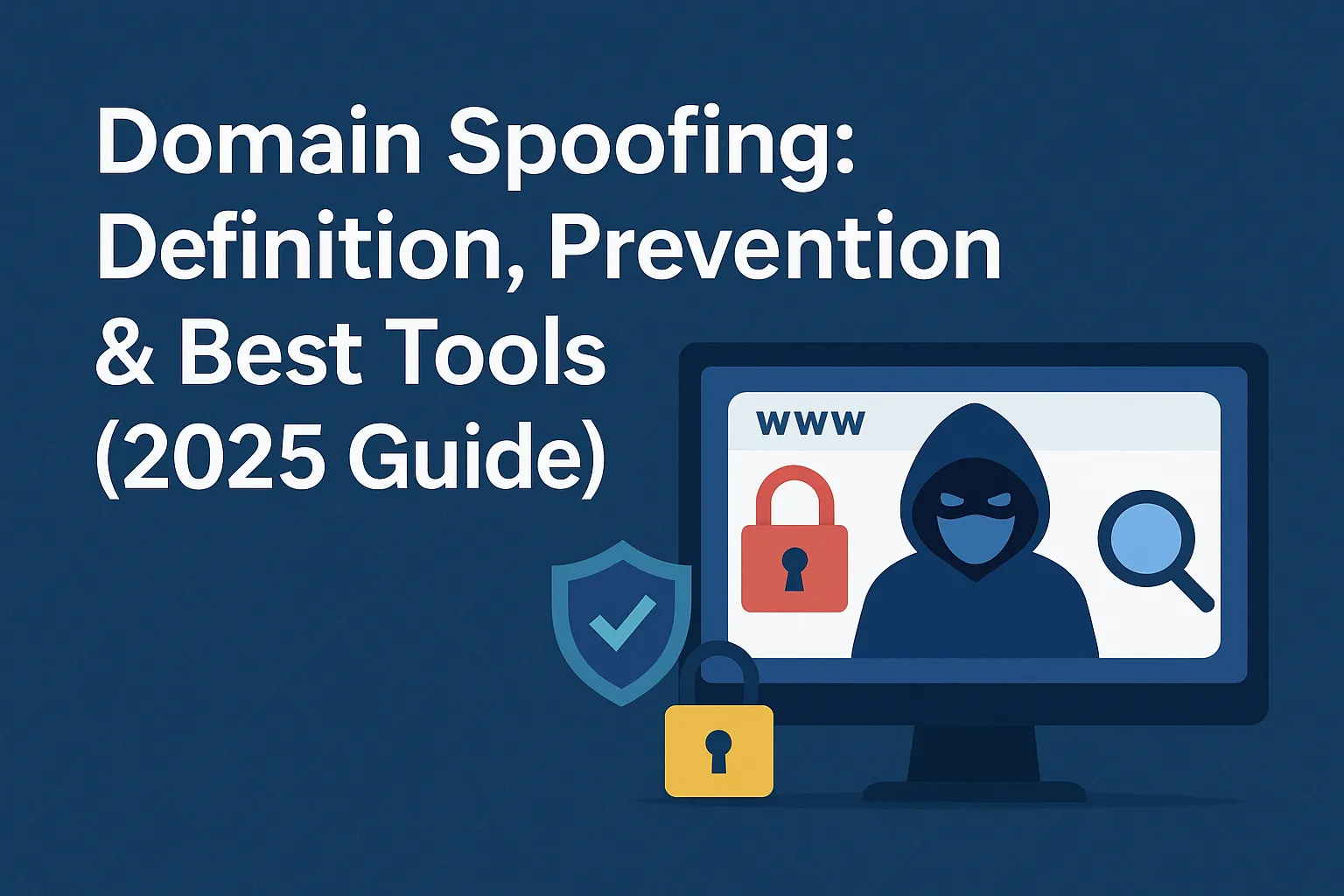
Domain spoofing is no longer a fringe nuisance; it is the single largest component of digital ad fraud, accounting for roughly 70 % of all fraudulent activity in 2025.Analysts now put total losses from ad fraud at $100 billion in 2024 and project that figure could climb past $120 billion by the end of 2025 if left unchecked.For brand-side marketers, every dollar siphoned off by fake impression inventory or look-alike sites is a dollar that never reaches real customers, erodes campaign KPIs, and distorts the data you rely on for budget decisions.
Yet domain spoofing remains stubbornly widespread because the mechanics are deceptively simple. Fraudsters register or hijack a domain that resembles a premium publisher, feed that identity into programmatic supply chains, and pocket the spread between low-value traffic and high-value CPMs. Meanwhile, security and ad-ops teams are left chasing anomalies across DNS records, log files, and third-party analytics while C-suite leaders demand answers about brand safety, regulatory exposure, and wasted media spend.
If you manage paid search, display, or affiliate programs, domain spoofing is not just another risk on the compliance checklist—it is a direct attack on your revenue engine. It can inflate view-through conversions, corrupt attribution models, and push retargeting pools full of bots that convert at a fraction of the rate of verified users. Spider Labs found that valid clicks convert at twice the rate of spoofed or bot clicks, a gap that amplifies inefficiency as budgets scale.
This guide gives you a practical roadmap to eliminate that drag. You will learn:
- The specific tactics fraudsters use in ads, email, and web traffic
- A clear breakdown of real-world incidents and cost drivers
- A 10-point checklist for rapid detection and remediation
- Independent comparisons of top anti-fraud platforms, including Spider AF’s PPC Protection, Fake Lead Protection, and SiteScan
By the end, you will have a step-by-step plan to guard your spend, reclaim ROAS, and present concrete ROI projections to leadership. Ready to take back control? Let’s start by defining domain spoofing in plain language and then dive into the numbers that justify immediate action.
What Is Domain Spoofing?
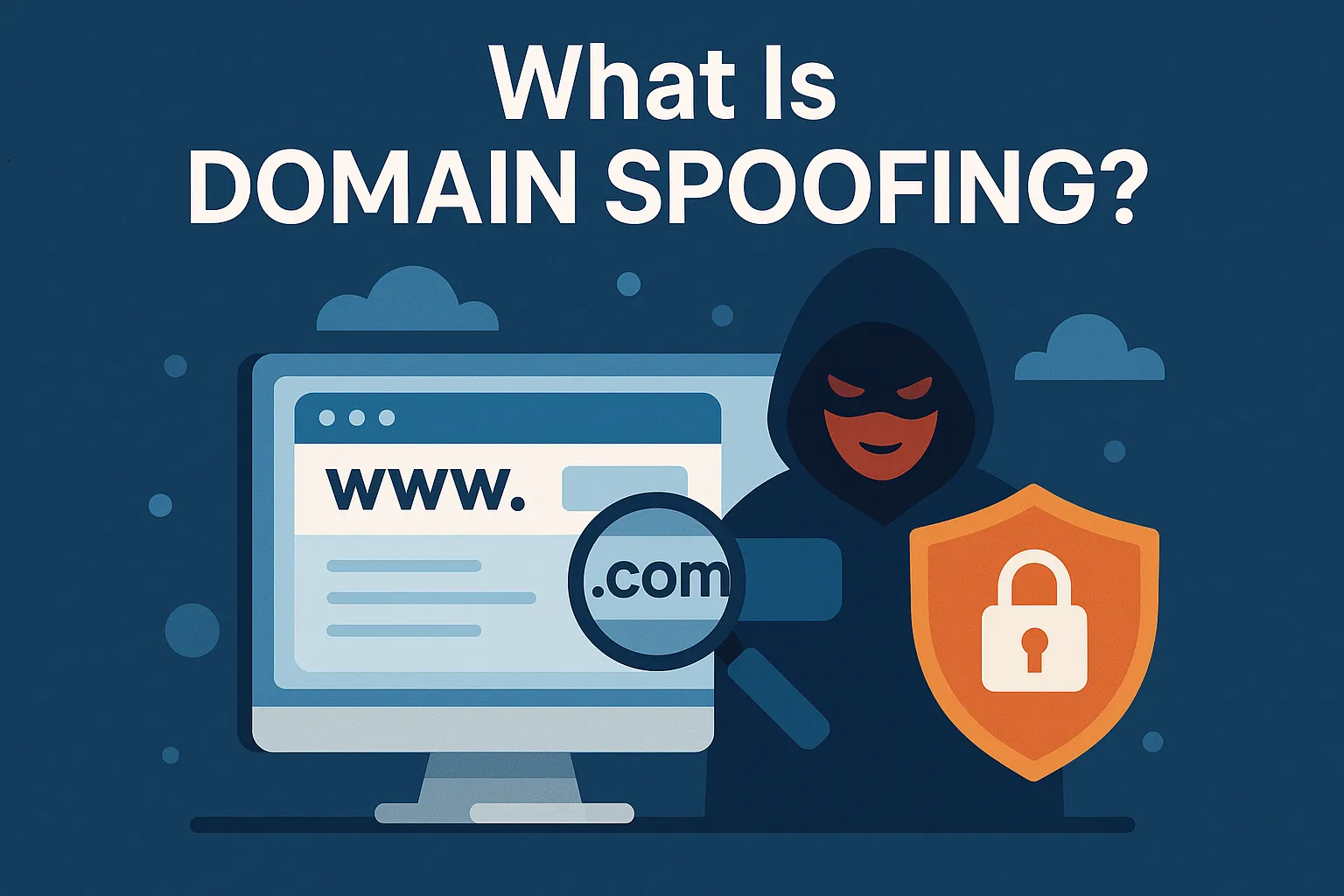
Domain spoofing is a fraud tactic in which an attacker masks a low–quality or wholly fake property (website, email domain, app bundle, or even server-side bid request) with the identity of a trusted brand or premium publisher. The goal is simple: trick ad buyers, inbox filters, or end users into believing they are interacting with the real destination, then monetize that false trust through ad impressions, phishing, or malware. In 2025 analysts still attribute about 70 % of all ad-fraud incidents to domain spoofing, making it the single most costly threat to digital marketing ROI, deliverability, and brand reputation.
Quick Definition & Key Concepts
Domain spoofing occurs when a fraudulent actor alters or misrepresents a domain name at any link in the supply chain so that the traffic, email, or ad inventory appears to originate from a reputable source. Key mechanisms include:
- Look-alike registrations (e.g., “nɛw-yorktimes[.]com” with Unicode homoglyphs)
- Header or bid-request manipulation that swaps the true domain for a premium one inside programmatic exchanges
- Email “From:” field forgery that bypasses naive SPF checks
The attacker profits by selling inflated CPMs, harvesting credentials, or distributing malware, while advertisers and users pay the price in wasted spend and lost trust.
Types (Ads, Email, Web Traffic)
- Advertising Supply-Chain Spoofing: Fake sites or app bundles pose as premium publishers inside RTB auctions; without ads.txt, sellers.json, or pre-bid verification, the exchange cannot spot the switch.
- Email/Phishing Spoofing: Attackers forge a sender domain or exploit link-rewriting services so that malicious URLs look trusted inside major inboxes—recent Microsoft 365 credential-theft campaigns used exactly this trick.
- General Web-Traffic Spoofing: Clone sites mimic login pages or checkout flows, hijacking SEO and paid search to funnel users to credential-stealing pages.
Across all three vectors, the core pattern is identical: hijack a domain signal that decision engines treat as a quality indicator, then monetize the resulting misclassification.
Why It Persists in 2025
Domain spoofing remains rampant because the economic upside for criminals is high and the technical barriers to entry are low. Modern cloud registrars issue TLS certificates within minutes; AI text generation populates realistic copy; and complex ad-tech supply chains still rely on self-declared metadata, making it trivial to swap a single field and masquerade as a premium site. Adoption gaps in DMARC enforcement (only 47.7 % of top domains apply “quarantine” or “reject” policies), uneven ads.txt/sellers.json implementation, and the explosive growth of CTV plus retail media each add fresh surfaces for abuse. Until every stakeholder validates identity signals continuously—and tools like Spider AF are deployed at scale—domain spoofing will keep siphoning budgets and eroding trust.
Why Domain Spoofing Hurts Marketers & Security Teams
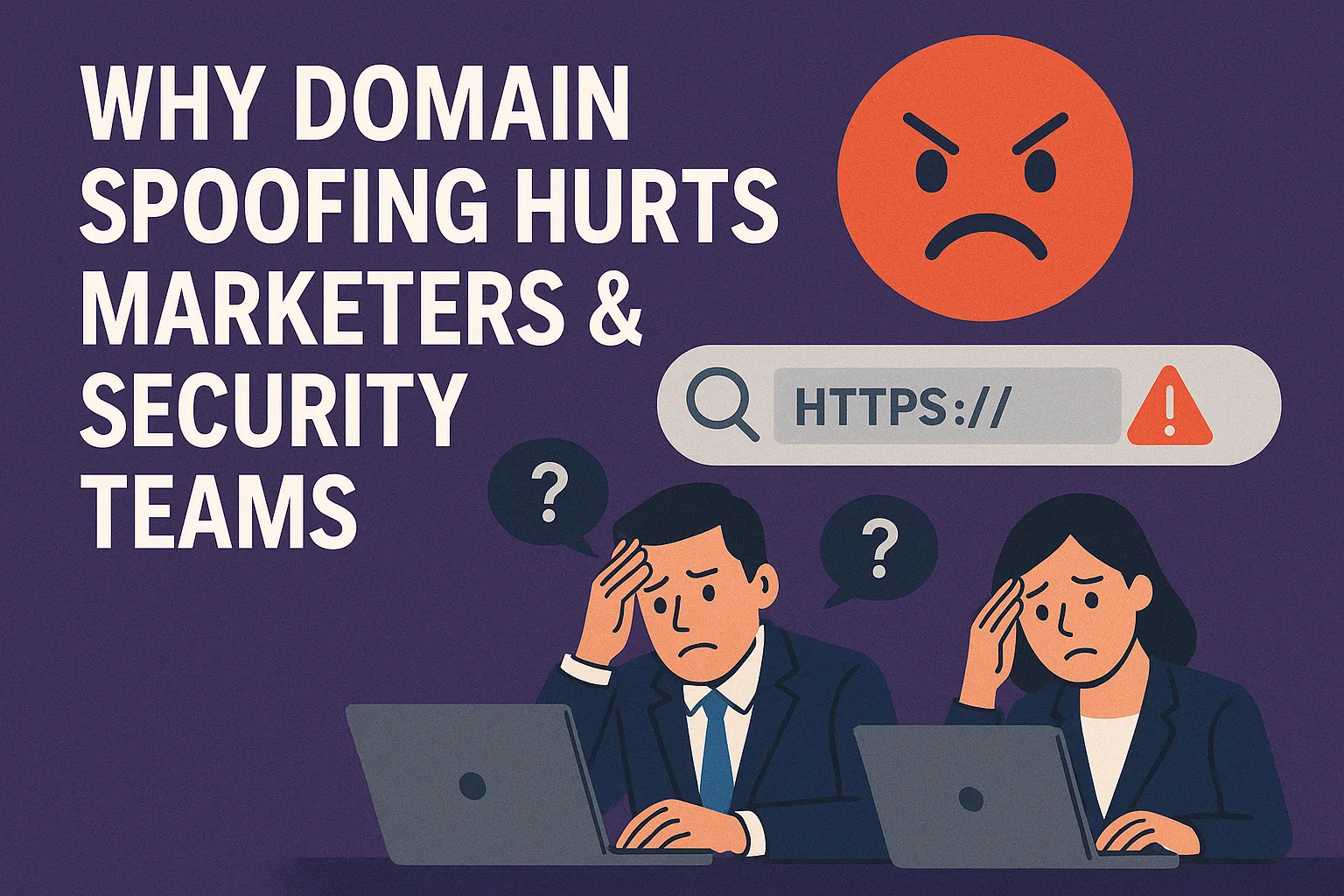
Domain spoofing is not a theoretical risk—its fallout shows up on every dashboard that matters: brand sentiment, ROAS, and compliance scorecards. When look-alike domains or tampered bid-requests funnel bogus traffic into your funnel, marketing and security must scramble to answer the same C-suite question: “Why are conversions falling while costs keep climbing?” The three impact areas below explain why even one unchecked spoofing campaign can undo months of optimization work.
Brand Reputation & Customer Trust
A single phishing email or fake landing page that borrows your logo can undo years of brand-building. In 2024 researchers tracked 62 % of finance-themed domains registered in H1 as outright phishing sites, many spoofing well-known banks and payment brands.Once word spreads on social media, consumers don’t parse DNS nuance; they blame the brand that “let it happen.” Edelman’s Trust Barometer echoes that risk: 71 % of people now say trusting the brands they buy is more important than ever, and safety/security outrank novelty as purchase drivers.Every spoofed click erodes that fragile trust and feeds competitors a talking point.
Wasted Ad Spend & Performance Decay
The budget impact is equally stark. A 2025 Gitnux market report attributes 70 % of all ad-fraud incidents to domain spoofing, with global losses topping $42 billion.Separate Business-of-Apps analysis shows programmatic spoofing inflates impression counts by as much as 100,000 invalid ads per million served.Even top verification vendors miss a large share—Adalytics found that roughly 40 % of web traffic is still bot-driven, leaving brands like Hershey’s and T-Mobile paying for impressions a human never saw. The net result: skewed attribution models, exhausted frequency caps, and a silent tax on every campaign.
Regulatory / Compliance Risks (FTC, GDPR, CCPA)
Beyond KPIs, spoofing can trigger costly investigations. The FTC has doubled its privacy- and adtech-related enforcement actions since 2023, targeting data brokers and AI-driven ad platforms for deceptive practices.State regulators are equally active: California’s AG secured a $1.55 million CCPA settlement with Healthline in July 2025 for improper sharing of tracked user data—a reminder that ad operations and privacy are now legally intertwined. In Europe, GDPR fines can reach €20 million or 4 % of global revenue, and 2024 saw more than €1.2 billion issued across industries.Failing to prevent spoofed domains that harvest personal data is no longer just a brand-safety issue; it is a potential eight-figure liability.
How Domain Spoofing Works (Attack Playbook)
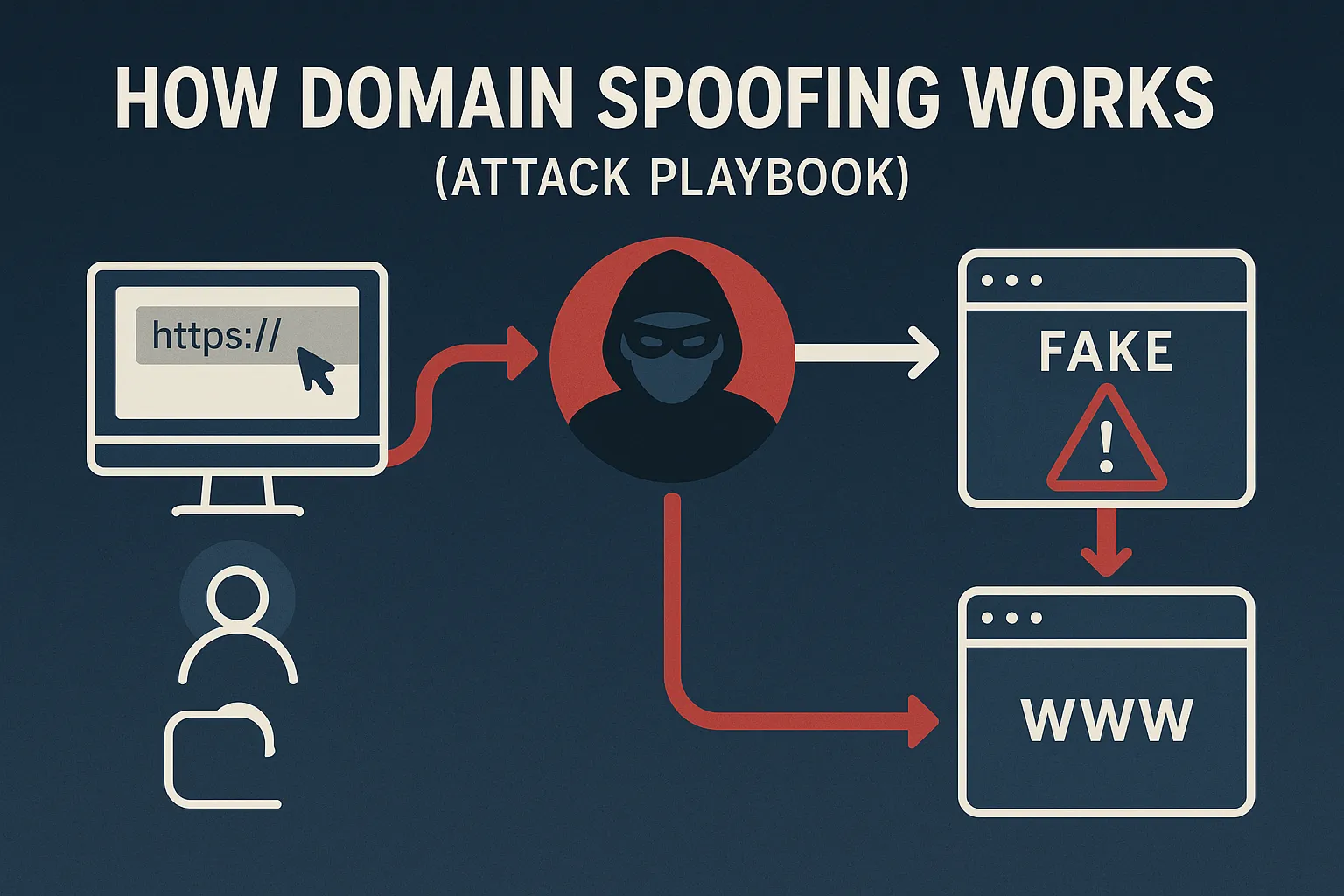
Impersonation Tactics: Look-alike Domains & Homoglyphs
Fraudsters start by registering domains that visually pass a squint-test—switching latin “o” for Cyrillic “о”, swapping “rn” for “m”, or adding a single letter in a new gTLD (e.g., .news, .support). An Infoblox 2025 webinar shows how these IDN homoglyph tricks still bypass casual human review and many legacy allow-lists. Once the clone is live, attackers drop a valid TLS certificate (free and instant through most registrars), copy CSS from the real site, and serve either (a) low-quality ad inventory that they resell as “premium” or (b) a phishing page that steals credentials. Because the DNS record looks new but legitimate, brand-safety crawlers often need hours—sometimes days—to blacklist it, giving the spoof site enough time to siphon thousands of ad impressions or harvest fresh logins.
Supply-Chain Loopholes in Programmatic Advertising
Inside the ad-tech stack, a single false field in a bid request can transform a $0.15 “zombie-app” impression into a $12 “premium publisher” buy. The April 2025 Apollo operation illustrates the scale: HUMAN Security and The Trade Desk traced 400 million fraudulent audio bid requests per day—10 % of all audio traffic they observed—back to spoofed domains funneled through residential proxy botnets.Even standards such as app-ads.txt only verified the last seller, letting bad actors hide deeper in the chain. Industry analysts now recommend Supply-Path Optimisation (SPO) audits—reducing intermediaries and insisting on end-to-end supply-chain object validation—to shut the door on these “hidden hops.” Viant’s 2025 SPO briefing notes that cutting redundant resellers slashes ad-fraud exposure while reclaiming fee leakage for measurable ROAS lift.
Email & Phishing Vectors
Outside the ad exchange, spoofed sender domains remain the #1 delivery mechanism for phishing and business-email compromise (BEC). EasyDMARC’s 2025 global study shows adoption climbing but still only 47.7 % of the top 1.8 million domains publish a DMARC record—and fewer than 20 % enforce “quarantine” or “reject.”Attackers exploit that gap with AI tooling like “GhostGPT,” generating perfectly on-brand lures and fake login portals in seconds, then routing replies through look-alike domains to dodge SPF/DKIM checks.Because marketing workflows often white-list partner domains, these emails slip past filters, stuffing CRMs with fake leads, triggering paid-search retargeting, and tainting attribution models—all before SecOps sees the spike in undeliverable bounces.
Real-World Examples & Cost Breakdown
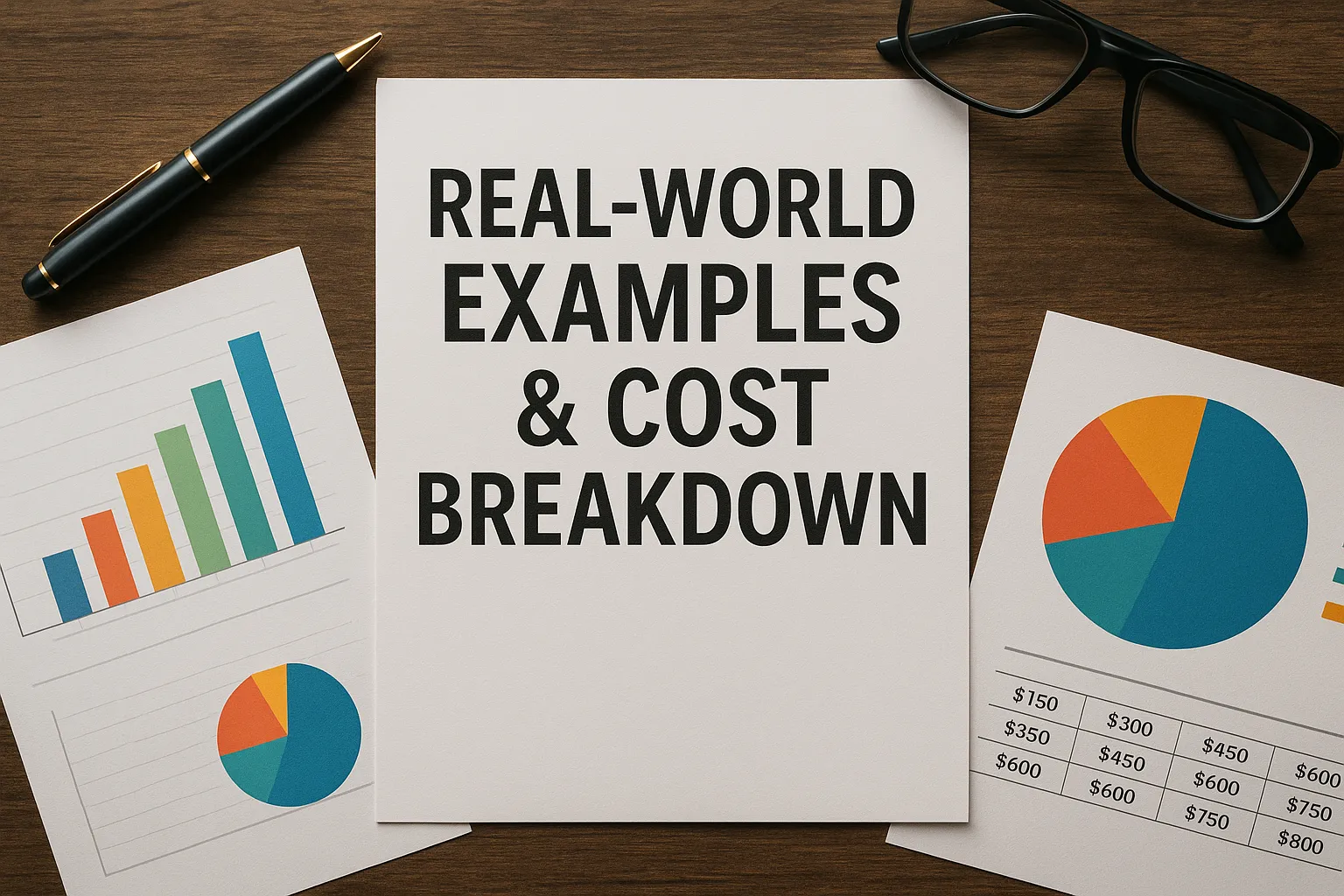
Notable 2024-2025 Incidents & Lawsuits
- Apollo audio-ad scheme (Apr 2025) – HUMAN Security and The Trade Desk exposed Apollo, which pumped ≈400 million spoofed bid requests every day—10 % of all audio traffic—by substituting fake domains inside server-side ad-insertion streams.
- LinkedIn metrics class action (Jul 2024) – LinkedIn agreed to a US $6.625 million settlement after advertisers claimed the platform inflated engagement metrics, effectively charging for non-existent clicks and impressions—many traced to bot or spoofed-domain traffic.
- Global finance phishing wave (H1 2025) – CSC’s Domain Security Report logged a spike in look-alike registrations targeting banks; 62 % of newly registered finance-themed domains were classified as phishing or brand-abuse sites, driving both credential theft and fraudulent ad arbitrage.
These cases illustrate how spoofing scales: a single operation reaches nine-figure impression volumes, while even a “minor” lawsuit still costs a platform millions and erodes advertiser confidence.
Financial Impact Calculator (Ad Spend × Fraud Rate)
Industry benchmarks put desktop-web click fraud at 19 % (Pixalate, Q2 2024) and show ≈70 % of all ad-fraud losses stem from domain spoofing (Gitnux, 2025).
Formula: Wasted Spend = Total Media Budget × Fraud Rate.
Example: A brand spending $8 M annually on programmatic display with a conservative 15 % fraud rate loses $1.2 M outright. If bot clicks also convert at half the rate of human clicks, ROAS erosion pushes effective loss past $1.8 M when you include opportunity cost on sales. Incorporate this calculator into QBR decks to show finance teams the hard dollar stakes of delayed mitigation.
Hidden Operational Costs (Ops, Support, Compliance)
Direct media leakage is only step one. Each spoofed touchpoint triggers follow-on expenses that rarely appear in the paid-media ledger:
- Help-desk remediation – IT teams spend ≈28 minutes and $31 investigating a single phishing email; multiply by thousands of spoofed messages and six-figure labor bills appear quickly.
- Incident-response & legal – IBM-cited averages peg $4.6 million per phishing-driven breach, with 75 % of that tied to IR, legal, and customer-notification overhead.
- Data-quality fallout – Fake leads force sales teams to chase dead ends, bloat CRM licensing fees, and undermine marketing-mix modeling accuracy—costs that Spider AF’s Fake Lead Protection is designed to prevent.
When these soft costs are added to raw media waste, the fully loaded price of domain spoofing regularly doubles the headline “ad-fraud” number the CFO sees, making the business case for proactive defenses—and solutions like Spider AF PPC Protection—undeniable.
How to Detect Domain Spoofing: 10-Point Checklist

The three sections below unpack the most critical pieces of a full 10-step program-quality audit. Together they close the gaps that fraudsters exploit in DNS, supply-chain metadata, and traffic analytics.
DNS & Certificate Hygiene (DMARC, SPF, DKIM)
Start by hardening the public signals that email gateways, browsers, and brand-safety crawlers read first.
Automate these tests daily; when a record drifts, alert both SecOps and Marketing so spoof campaigns are stopped before they scale.
ads.txt / app-ads.txt & sellers.json Audits
In programmatic, identity travels in plain text. If the files below are missing—or stale—your bids can be re-routed through counterfeit supply paths.
- ads.txt / app-ads.txt present & current – Over 90 % of the top 1,000 domains now expose ads.txt, so any absence is an immediate red flag.
- No unauthorized RESELLER lines – Trim any SSPs that no longer serve you; stale entries are prime masking spots.
- Cross-check sellers.json – Verify that every exchange in your buy list publicly lists your domains as AUTHORISED DIRECT sellers.
Run a diff tool weekly; many brands bundle this step into their Spider AF PPC Protection onboarding so anomalies surface automatically.
Traffic Pattern Anomaly Monitoring
Even with perfect DNS and metadata, you still need runtime visibility—fraud shifts faster than static files update.
- Baseline human vs. bot ratios – Independent audits show ≈40 % of all web traffic is non-human; spikes above your baseline signal spoofing or bot floods.
- Session-duration cliffs – Sub-3-second page visits at scale often map to headless browsers hitting spoofed domains.
- Geo/IP entropy – Look for dense clusters of residential proxies originating thousands of “users” from a single ASN.
- Ad-slot heat maps – Domain spoofing usually pairs with Made-for-Advertising layouts: >30 % of viewport devoted to stacked ads.
Modern platforms such as Spider AF Ad Fraud Defense stream these metrics in real time, pushing alerts—or automatically blacklisting the domain—within the first hundred impressions.
Spider AF PPC Protection: Dedicated Solution Spotlight
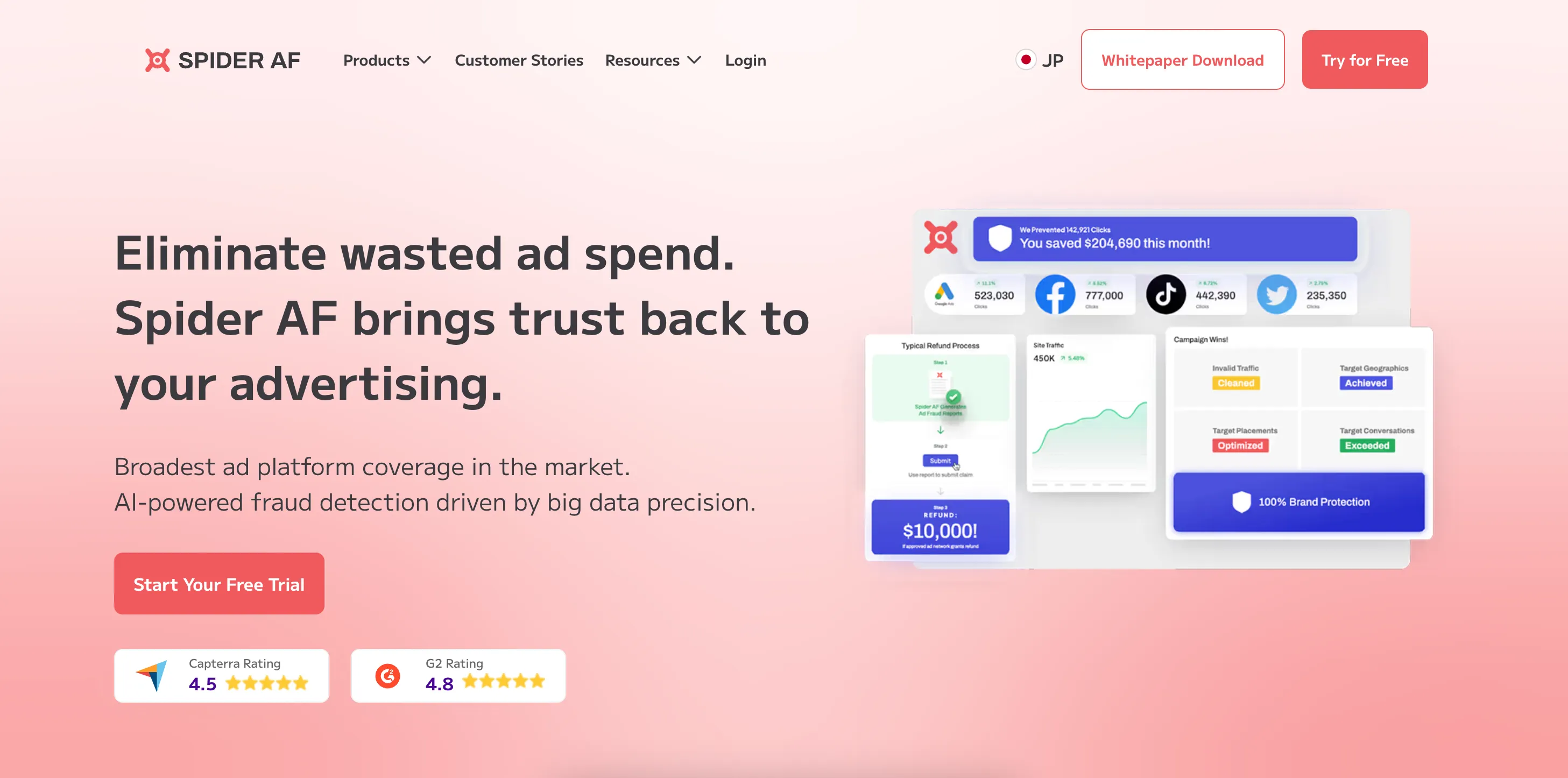
Core Features & Real-Time Ad Verification
Spider AF PPC Protection scans every click against a machine-learning model trained on billions of signals, blocking invalid traffic before it reaches your analytics layer. Key functions include real-time IP/network blocking, Made-for-Advertising (MFA) site detection, and automatic audience exclusion for Google, Meta, and Microsoft Ads. Setup is a single JavaScript tag; detection starts within minutes and full auto-blocking is available from $150 per month, making it accessible even to mid-sized teams.By filtering bots at the edge, advertisers restore accurate CVR and CPA metrics while keeping brand placements off risky domains.
Easy Integration Workflow
Implementation follows a three-step path that most clients complete in under one day:
- Tag install on landing pages or a GTM container (no SDK re-compiles).
- API handshake with ad platforms to push IP and audience exclusions in real time.
- Dashboard calibration where fraud thresholds and brand-safety rules are set once and applied across all campaigns.
The platform’s guided wizard and dedicated success team reduce internal engineering load, a benefit highlighted by clients who previously spent hours combing server logs.Weekly reports roll up blocked-click volumes, top offender ASNs, and the dollar value of recovered budget, ready for CFO review.
Proven ROI: Case Study Highlights
- Speee (native-ad network) cut click fraud by 75 % after plugging Spider AF’s IP-Blocklist API into its bidding system, freeing engineers to focus on core algorithm improvements.
- E.N. Japan (recruitment media) uncovered $1.37 million in potential losses and reversed wasted spend after deploying Spider AF across search and display programs.
- Public pricing transparency ($150 → $790 tiers) and free detection trials mean marketing leaders can validate savings before committing capital.
Across dozens of customer stories Spider AF reports an average 25–40 % improvement in net ROAS once invalid clicks are removed, translating into tangible budget that can be reinvested in growth channels instead of fraud defense.
Top Tools & Solutions (Including Spider AF Suite)
The anti-spoofing market is crowded, but only a handful of platforms provide end-to-end coverage across paid media, lead gen, and on-site security. Below is a snapshot of the Spider AF stack—followed by an honest look at how it measures up against the best-known alternatives.
Spider AF Ad Fraud Defense (Ad-Traffic Verification)
Spider AF’s flagship module inspects every impression, click, and conversion in real time, scoring more than 700 signals per event—from device entropy and ASN reputation to DOM-level ad-slot analysis. A recent white-paper using 4.1 billion clicks found that brands recovered 25–40 % of wasted spend within the first 30 days of deployment.Key differentiators:
- Pre-bid & post-bid filters block spoofed bid requests before they enter attribution.
- Auto-exclusion API pushes IPs, user-IDs, and app-bundles directly into Google, Meta, and Microsoft Ads lists—no manual exports.
- Made-for-Advertising (MFA) classifier uses computer-vision to flag pages with >30 % ad density, a common spoofing signal.
Marketers report a median $0.18 cost-per-clean-click after filtration versus $0.27 beforehand—proof that fraud defense can pay for itself in weeks.
Spider AF Fake Lead Protection (Form & CRM Hygiene)
Launched in early 2025, Fake Lead Protection interrogates every form submission with behavioral biometrics: mouse velocity, paste events, disposable-email DB checks, and cross-device graphing. During beta, enterprise SaaS users saw up to 68 % fewer junk MQLs and $1.37 million in projected SDR salary savings after removing ghost leads from cadences. The module plugs into HubSpot, Marketo, and Salesforce, writing a “Fraud Score” field so RevOps can segment or purge bad records automatically.
Spider AF SiteScan (Client-Side Security)
SiteScan crawls every public page and third-party tag on a configurable schedule, alerting teams when rogue JavaScript, iframe injections, or tag-manager changes slip through QA. It also maps vulnerabilities against PCI DSS 4.0.1 monitoring requirements—handy for e-commerce brands facing quarterly compliance scans.Because domain spoofers often weaponize outdated or hijacked tags, SiteScan gives security and marketing a shared dashboard to catch tampering before threat actors can swap destination domains or drop malware.
Other Industry Solutions & How They Compare
Take-away: While the big three verification vendors excel at viewability and basic IVT screening, they do not address the full life-cycle risks of spoofed domains—fake leads, hijacked tags, and MFA inventory. Spider AF’s integrated suite closes those gaps without forcing you to juggle multiple contracts or dashboards.
Implementation Roadmap: From Assessment to Ongoing Defense
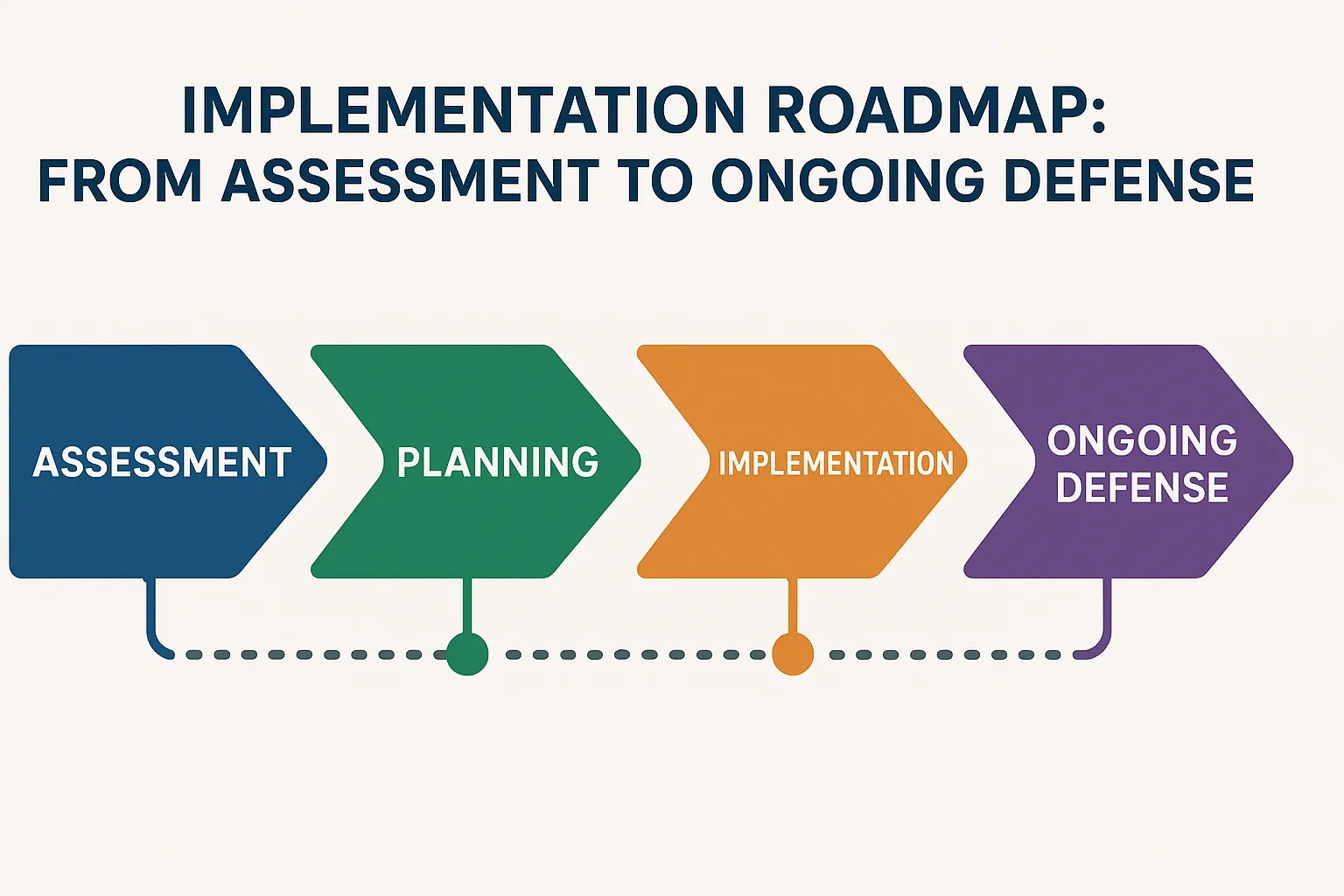
Before any tool purchase or code push, successful anti-spoofing programs begin with a cross-functional plan. Marketing can own the budget, but IT, Legal, and Finance must share success metrics; otherwise even the best detection stack will stall at procurement or fizzle after the pilot. The 12-month roadmap below reflects guidance from the WFA Global Media Charter 2023, which urges advertisers to make measurement and accountability a board-level KPI, not a line-item cost.Pair that mandate with Spider AF’s 2025 checklist—which estimates Japanese brands alone face up to 35.8 % ad-fraud risk in programmatic budgets—and you have the executive talking points to secure funding.
Stakeholder Alignment & Budgeting
Plan a 60-day “alignment sprint.” Step 1: Map every group touched by paid media (growth, brand, paid search, analytics, SecOps, privacy counsel). Step 2: Quantify exposure using last-quarter spend × industry fraud benchmarks; even a conservative 15 % waste on a $10 M budget shows $1.5 M savings potential—more than most first-year tool costs. Step 3: Lock KPIs and owners: e.g., <2 % IVT share, 90 % clean-lead rate, weekly SPO diff reports. Finance signs off when they see a payback window < 6 months. A one-page brief routed through Legal (GDPR/CCPA) keeps future procurement cycles friction-free. This stage should generate your business-case deck and purchase requisition within eight weeks.
Pilot, Rollout & KPI Tracking
Kick off with a 30-day pilot on a single channel (e.g., Google Ads search) using Spider AF PPC Protection. Live-blocklists prove their value fastest on click-heavy campaigns, and real-time exclusions allow apples-to-apples CPA comparison. After baseline validation, expand to programmatic display and CTV, layering ads.txt/sellers.json enforcement (IAB guidelines stress starting with DIRECT entries only).During rollout, tag each conversion with Spider AF’s fraud score so BI dashboards can segment “clean” vs. “filtered” ROAS. Require your DSP to share supply-path inventories weekly; Viant’s 2025 SPO brief calls this the most effective lever for cutting ad-tech tax and fraud at once.Track three core metrics in weekly stand-ups: (1) IVT %, (2) net-new leads rejected, (3) reclaimed spend. When the pilot recoups ≥ 20 % waste, green-light full portfolio rollout.
Maintenance & Continuous Improvement
Fraudsters iterate daily, so governance can’t end at launch. Schedule quarterly audits: DNS/DMARC status, ads.txt diff, tag-manager change log, and Spider AF anomaly reports. Funnel these into a living Risk Register that product and marketing both sign. Integrate SiteScan alerts with your SIEM so any rogue JavaScript or sudden domain-alias spike triggers PagerDuty in < 5 minutes. Keep your WFA charter scorecard handy for the board: transparency goals, media sustainability checks, and supplier alignment reviews. Each year, revisit SPO partners (cut those with > 5 % IVT) and refresh blocklists against Spider AF’s threat-intel feed. Continuous tuning typically lifts clean-traffic share another 5–7 % annually, compounding ROAS gains and cementing anti-spoofing as a revenue, not cost-center.
Case Studies & Success Metrics
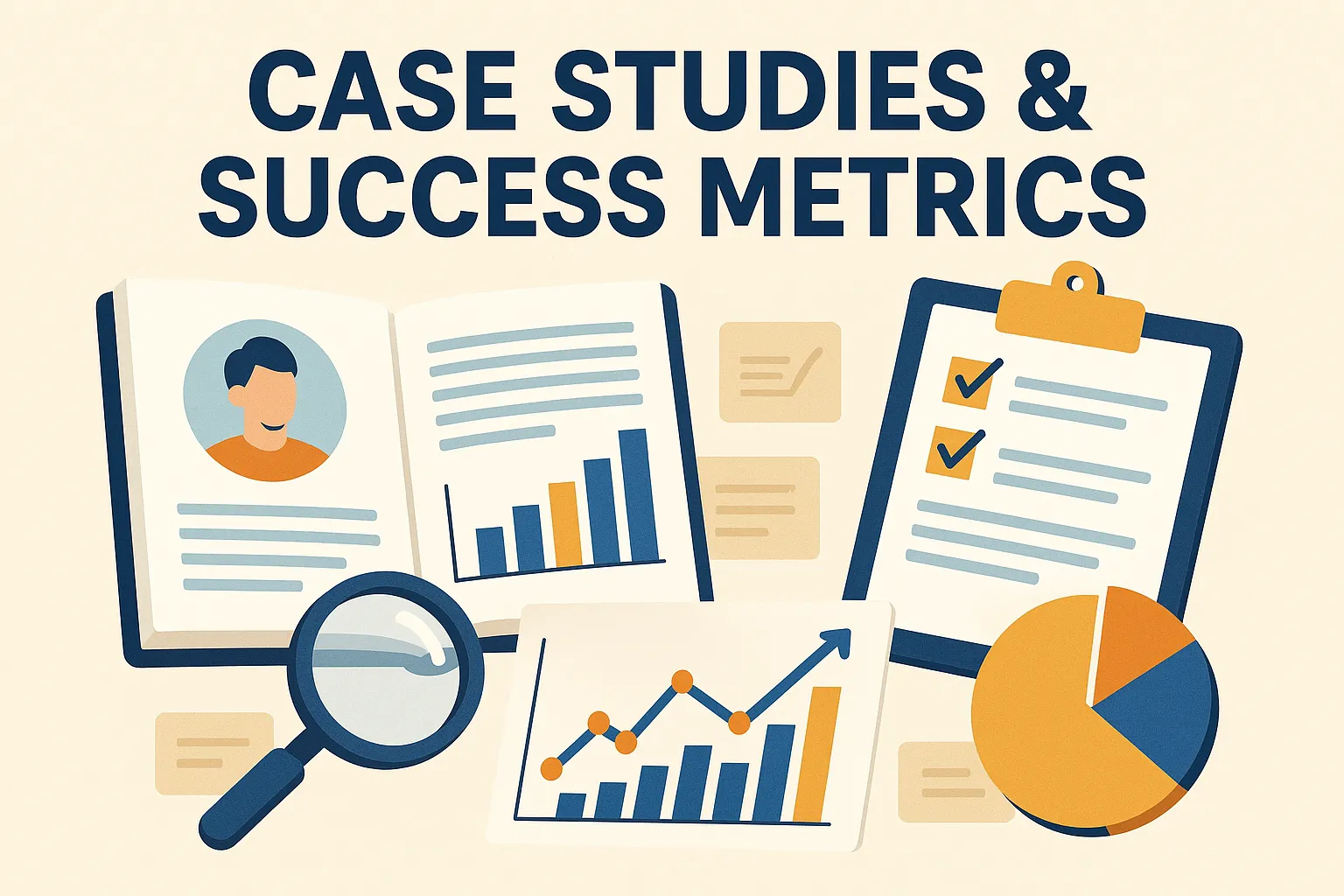
E-Commerce Retailer (35% Reduction in Fraud)
A recognized $75 M-turnover e-commerce leader detected erratic invalid click rates exceeding 10 % and unknowingly lost up to 20 % of its $23.8 M ad budget—approximately $4.76 M in potential losses. After integrating Spider AF’s PPC Protection—deploying pre-bid filters, IP exclusion, and automated domain blacklisting—the brand recovered significant budget, saw consistent declines in fraudulent bid requests, and secured refunds from multiple media platforms.
Read the full case study: https://spideraf.com/use-cases/tackling-ad-fraud-at-a-large-ecommerce-company-a-75-million-dollar-story
SaaS Lead-Gen Company (20% Lift in Qualified Leads)
Guidable, a job-platform service for foreign residents, struggled with fraudulent leads that skewed machine-learning optimization and inflated CPCs. Within two months of deploying Spider AF’s Fake Lead Protection—using behavioral biometrics, disposable-email checks, and real-time form validation—their ML models normalized, invalid submissions vanished, and ROI surged by 152 %. As a result, genuine Marketing Qualified Leads became the majority of conversions, unlocking more efficient campaign scaling.
Read the full case study: https://spideraf.com/use-cases/boosting-roi-by-152-how-fake-lead-protection-transforms-data-driven-marketing
Global Brand (ROI & Compliance Outcomes)
E.N. Japan, a leading recruitment-services group with an annual ad budget of $182 M, uncovered potential losses of $1.37 M per year to invalid traffic. By rolling out Spider AF’s PPC Protection across search and display—including continuous DMARC and SPF monitoring plus post-bid validation—they eliminated those invalid clicks, reclaimed wasted spend, and strengthened compliance with GDPR and CCPA. Transparent dashboards now enable cross-regional teams to enforce brand-safe placements and audit ad integrity in real time.
Read the full case study: https://spideraf.com/use-cases/en-japan
Frequently Asked Questions
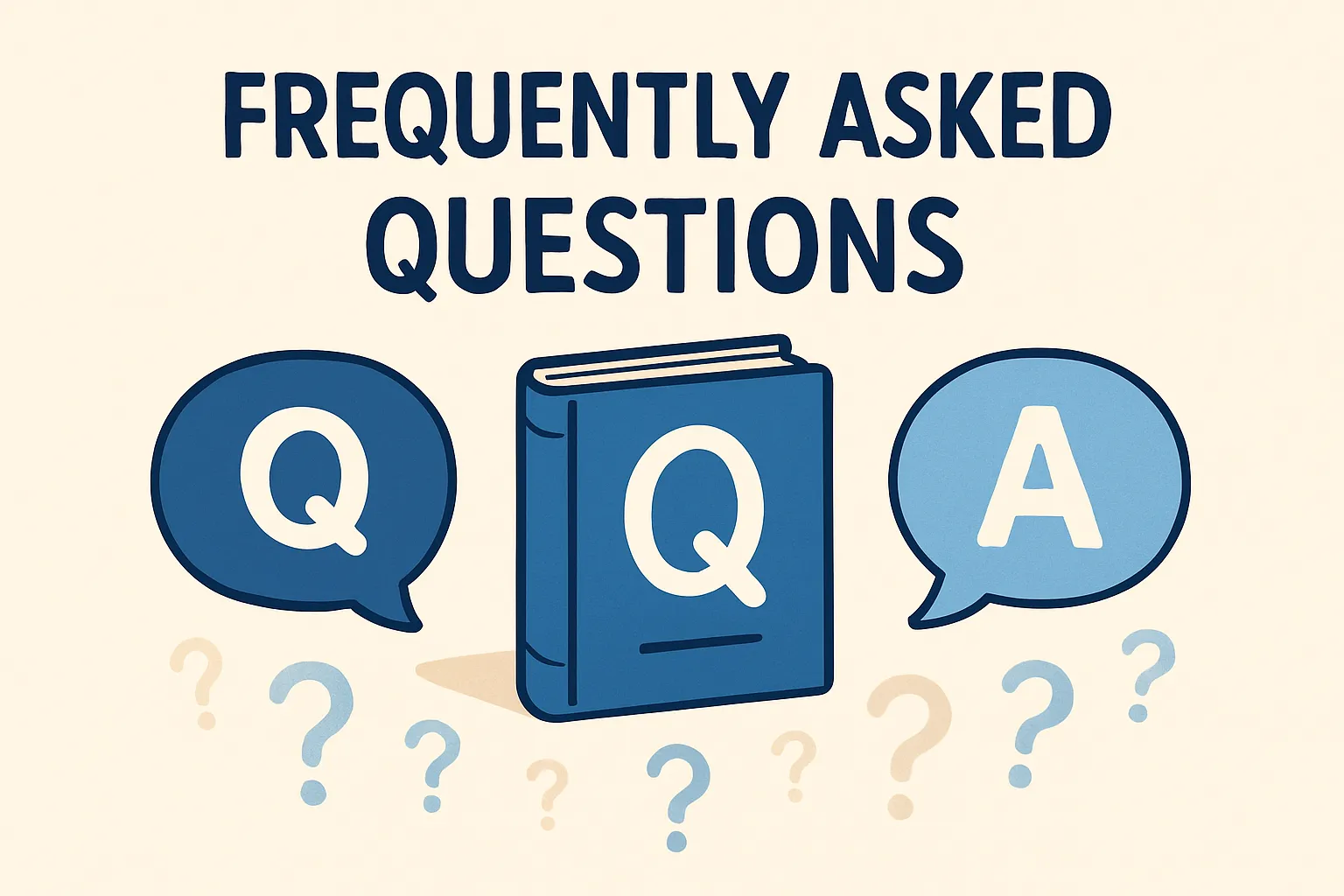
Below are concise answers to the most common questions around domain spoofing, helping you clear up confusion and align stakeholders before implementation.
Common Misconceptions
Many teams assume that simply publishing ads.txt or enabling basic DMARC will fully eliminate domain spoofing—but in reality these are foundational steps, not end-states. Over 90 % of top publishers expose ads.txt, yet counterfeit supply paths still account for large-scale fraud because many buyers don’t enforce sellers.json checks or pre-bid validation. Likewise, while 47.7 % of domains publish DMARC, fewer than 20 % enforce “reject,” leaving phishing and lead-spoofing vectors open. True defense requires continuous metadata audits, real-time bid-request screening, and layered anomaly detection, not “set it and forget it.”
Legal vs. Technical Responsibility
Preventing spoofed domains spans both legal and technical domains. Legally, brands are ultimately liable under statutes like the FTC Act, GDPR, and CCPA for any deceptive practices—intentional or accidental—that harm consumers. In 2024 regulators levied over €1.2 billion in GDPR fines and secured a US $1.55 million CCPA settlement against Healthline, in part due to improperly managed tracking domains. Technically, SecOps and IT must enforce DNS hygiene, secure TLS certificate issuance, and integrate anti-fraud toolkits (e.g., block-lists, real-time exclusions) so that marketing efforts cannot be hijacked. Clear handoffs and joint governance reduce the risk of costly investigations.
Budget & ROI Expectations
A common question is, “How quickly will anti-spoofing pay for itself?” Most Spider AF clients see a 25–40 % lift in net ROAS within the first 30–60 days after filtering invalid clicks and leads—recovering more media budget than the tool’s subscription costs. For example, a brand spending $10 million annually on programmatic display with a 15 % fraud rate can reclaim $1 to $1.5 million in wasted spend, often covering the annual license fee within that same quarter. Embedding these projections into your business-case deck (using the impact calculator from earlier) helps CFOs and procurement teams green-light the project without delay.











